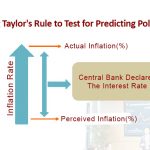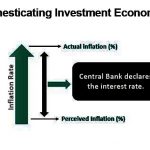Mayhem in the stock market no more astonishes those who invest in shares regularly. No one wants to suffer from it, but everybody feels the burn when it strikes the market. However, institutional investors somehow reduce the intensity of financial burn by employing resources at their disposal. On the contrary, individual investors, particularly the small ones, invariably become the victims of market mayhem.
Why does the former emerge unscathed from a crisis while the latter gets boiled in it? Do institutional investors have access to investment tools un-available to individual investors? Are they better trained at managing market risk?
After studying the market players for years, it would be apt to say that institutional investors are ahead than individual investors in respects of infrastructure, resources, and intellectual capabilities. They have financial resources for averaging positions, diversifying investments, and continue being long for an extended period in an unfavorable environment.
With the exclusion of derivatives, liquidity is one of the key factors that shape investor’s ability to exercise any of the above options to manage investment risk. Liquidity is usually a scarce commodity for individual investors, particularly small ones. They depend primarily on divestment proceeds, capital gains, dividend income, and combination thereof for liquidity.
Therefore, with sufficient liquidity at their disposal, individual investors will be at par to institutional investors in managing market risk with a chance of coming out unscathed from a market crisis like institutional investors.
The question is how individual investors can have the kind of liquidity needed for financial resilience of institutional investors? The conventional approach merely suggests injecting fresh equity or debt.
Options start surfacing the moment a solution is searched beyond the conventional paradigm. Amongst them, Price Diversification is one.
It is an investment strategy that propagates diversification based on price rather than asset classes. Underprice diversification, shares of a single company are purchased at different prices. Quantities purchased at a price are bundled, tagged, and reported as a unique investment in the portfolio. Shares are accumulated when prices start concaving up at a level.
Whenever the price bounces back beyond the purchase price of a uniquely tagged bundle, shares in the bundle are sold. Liquidity generated is re-invested in the same stock at a price less than the price at which shares were sold. The cycle goes on and on.
Profit earned, capital gains realized, and proceeds from sell of shares together improve liquidity of individual investors. Improved liquidity allows individual investors to maneuver their positions in tandem with changes in market.
Price diversification strategy works well when combined with technical analysis. Effective practice of the same requires centering investment activities as under:
- Select a single stock, fundamentally strong with promising earnings and of high beta & trading liquidity
- Perform technical analysis to establish support levels for prices
- Look for the level where the price seems to be concaving up
- Accumulate shares around concaving up with capital provisions for additional buying of shares in case the price breaks curve downwardly
- Quantity purchased at a price treat as unique investment when the market price of share in a bundle exceeds the holding cost sale shares in the bundle
- Replenish the inventory when price of a stock falls below sold price
Even though, this strategy has its own set of risks, possibility of locking up investments for an extended period is one of them. Such a situation may lead to liquidity risk again. Moreover, efficacy of the strategy comprises to a great extent in a collapsing market.
Price diversification strategy’s success is based on achieving an equilibrium between the average costs of holdings and prevailing market price of the share at a point in time.
The concept of ‘Preference Inventory’, referring to tagging a bundle of shares uniquely and treating them as a unique investment, is not an accepted accounting principle. It was conceived and proposed as a tool to improve liquidity profile of individual investors. Therefore, not to be used for financial reporting and tax purposes.
The writer is a business graduate in Finance and MIS from IBA, Karachi with a MSc Statistics from University of Karachi and a fellowship in Life Insurance from LOMA, USA and a certified trainer by the US-AID Programme. He has has been associated with business schools as a visiting faculty teaching courses on investment, finance, and financial risk management. He is currently engaged in investment research and policy with one of the leading life insurance companies in Pakistan.







